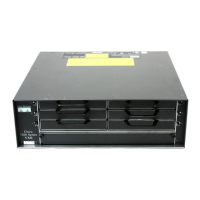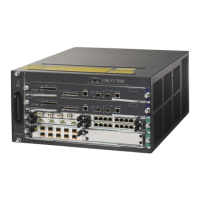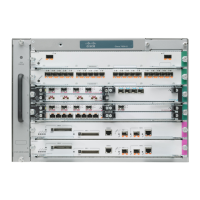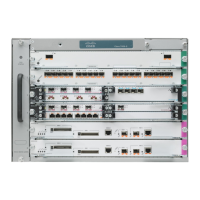Send document comments to nexus7k-docfeedback@cisco.com
4-8
Cisco Nexus 7000 Series NX-OS Interfaces Configuration Guide, Release 5.x
OL-23435-03
Chapter 4 Configuring Layer 3 Interfaces
Configuring Layer 3 Interfaces
Note The default setting is broadcast, and this setting does not appear in any of the show commands.
However, if you do change the setting to p2p, you will see this setting when you enter the show running
config command.
Use the switchport command to convert a Layer 3 interface into a Layer 2 interface.
This example shows how to configure a routed interface:
switch# configure terminal
switch(config)# interface ethernet 2/1
switch(config-if)# no switchport
switch(config-if)# ip address 192.0.2.1/8
switch(config-if)# copy running-config startup-config
The default setting for interfaces is routed. If you want to configure an interface for Layer 2, enter the
switchport command. Then, if you change a Layer 2 interface to a routed interface, enter the no
switchport command.
Configuring a Subinterface
You can configure one or more subinterfaces on a routed interface or on a port channel made from routed
interfaces.
BEFORE YOU BEGIN
Configure the parent interface as a routed interface.
See the “Configuring a Routed Interface” section on page 4-6.
Create the port-channel interface if you want to create a subinterface on that port channel.
Ensure that you are in the correct VDC (or use the switchto vdc command).
SUMMARY STEPS
1. configure terminal
2. interface ethernet slot/port.number
Command Purpose
medium {broadcast | p2p}
Example:
switch(config-if)# medium p2p
Configures the interface medium as either point to
point or broadcast.
Command Purpose
switchport
Example:
switch(config-if)# switchport
Configures the interface as a Layer 2 interface and
deletes any configuration specific to Layer 3 on
this interface.

